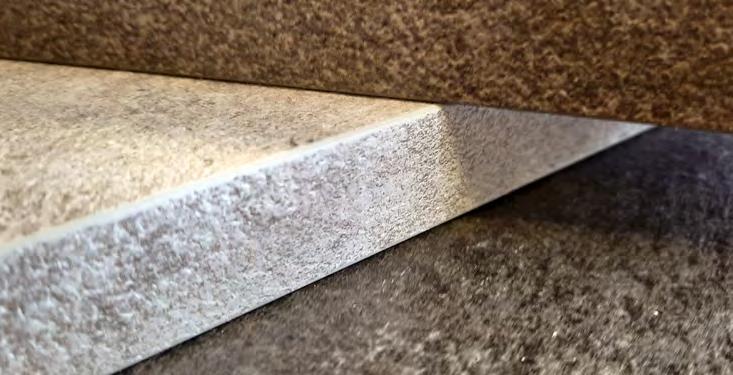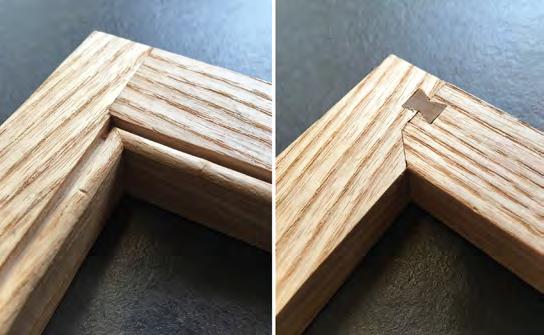
1 minute read
A HIMACS kitchen that withstands the test of time
For this project, Nicolas Yazigi tackled the constraint of creating a kitchen that fits perfectly with yesterday’s tradition, all while offering modern functionality. From his original profession as a woodworker, he draws on a continual quest to blend different types of wood and materials. Here, he employs oak, natural stone and HIMACS, but above all, his pursuit of perfection.

Located in a vineyard in the south of France, Nicolas Yazigi tells us, “the specifications were simple at first glance: design a harmonious, ergonomic, elegant kitchen in a vaulted space, integrating it perfectly into the irregular, stone interior. What made this even trickier was that there needed to be a space for a passage into an adjoining room. The choice of materials was a key component.”

The kitchen’s two runs of units are made of oak and are an impressive 4.3m long (one of 80cm wide and the other 70cm). Its worktop, splashback and side façades in immaculate HIMACS create a striking contrast.
Part of the difficulty was to create such extremely long worktops. But the incredible properties of the solid surface material enabled a seamless assembly, ensuring not only sleek lines, but also ease of cleaning for impeccable hygiene. The hob and sink are embedded in the worktop, and two dish drainers are carved into its surface. Attentive to detail, Nicolas Yazigi went so far as to craft a chopping board which slides along the worktop.

Though meticulous execution was required to fit the kitchen into the irregularity of the interior stone wall, the end result is absolutely stunning. Because HIMACS can be worked like wood, for this project, Nicolas Yazigi used the carpentry techniques he acquired during his work on mountain cabins. In so doing, an initial wood model was constructed and laid atop the HIMACS sheet, which was then cut using a wood router.
This project is a remarkable illustration of a flawless interface between past and present.
And HIMACS stands up marvellously to such a challenge, because its properties enable designers to adjust to each era, each structure, and ultimately enhance the end results. The completely smooth, non-porous surface and seamless assembly of HIMACS make it not only incredibly hygienic, but also resistant to wear, scratches and even to stains such as those from the wine produced in this vineyard. www.himacs.eu










